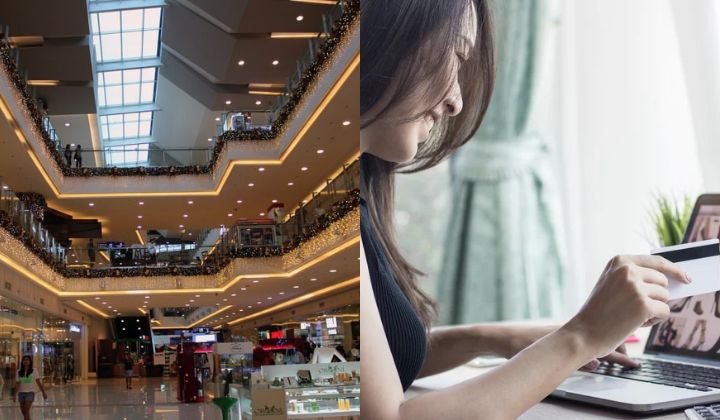Is Online Shopping Killing Retail Stores? 3 Reasons Why Retailers Are Struggling
It is an exciting experience by itself to embrace the constant evolution in shopping.

Subscribe to our FREE Newsletter, or Telegram and WhatsApp channels for the latest stories and updates.
In some cases, a trip to the mall isn’t what it used to be. Some shopping malls are not seeing much life, with shoplots not taken up and lower amount of foot traffic.
Some malls still do thrive though due to location and various other activities, such as dine-ins and events.
As for the retail shopping experience itself, is online shopping killing it? Yes, but also, not quite.
I have fond memories of shopping at Westfield in downtown San Francisco.
— Scott Ford (@GreatScottFord) March 12, 2024
Can't believe practically all retail options pulling out and perm closing everywhere. pic.twitter.com/BLx7y5RwKk
In the case of Westfield in San Francisco, it appears safety is an issue. A rebranding exercise is underway to revive it but it remains to be seen if that will draw shoppers once again.
Online shopping
The obvious culprit post-pandemic is online shopping.
With the rise of E-commerce, it is undeniable that consumers increasingly prefer the convenience of shopping from the comfort of their homes.
Shopee, Lazada, Shein, and Zalora are mainly the few major sites that offer a wide variety of products at affordable prices.

Convenience plays its part once E-Commerce features are now added onto social media sites, such as Facebook, TikTok, and Instagram, encouraging its users to both sell and buy on its marketplace.
This shift has significantly impacted traditional brick-and-mortar retailers, leading to declining foot traffic and sales in physical stores.
However, online platforms are not the only cause of decline for retail shopping, as there are more layers into understanding the fall of retail shopping.
Overhead
As if retail stores aren’t suffering enough, physical operating costs are at an all-time high.
Retailers face significant overhead costs associated with maintaining physical stores, including rent, utilities, and staffing.
These expenses can be particularly burdensome in prime locations with high competition and escalating real estate prices.

In contrast, E-commerce businesses can operate with lower overhead costs, allowing them to offer competitive pricing and invest in other areas such as marketing and technology.
Physical stores that don’t get enough traction will not be able to survive in this inflation.
Trends
Another factor leads to the constant change of trends. There will always be a targeted audience in business, however, consumers are easily influenced, hence the constant change of preference in shopping.

An example would be the change of environment after the long pandemic. With lockdowns and social distancing measures in place, many consumers turned to online shopping as a safer alternative to in-person retail.
They have come to expect seamless shopping experiences, personalized recommendations, and hassle-free returns, which many traditional retailers struggle to provide.
Today’s consumers are more digitally savvy and value convenience, variety, and competitive pricing.
Online platforms such as Grab and Foodpanda, are platforms that provide their consumers with the option to shop for groceries online.

As a result, consumers are less inclined to visit physical stores, particularly for routine purchases.
Malls aren’t dead, but physical retail has its challenges to sustain its business.
Although large malls are still up and running, we cannot help but wonder what the future shopping experience would be like in the next 10 years.
It is an exciting experience by itself to embrace the constant evolution in shopping.
Share your thoughts on TRP’s Facebook, Twitter, and Instagram.





